BlackJack Privee
PRIVATE BLACKJACK
GAME RULES
Objective of the game The objective of Blackjack is to get 21 points or beat the dealer's total points by trying to get as close to 21 as possible without going over, otherwise you "bust". Wins with a score below 21 are paid 1:1.
CARDS
The game is played with 6 decks of 52 cards, according to the following basic rules:
The deck is shuffled at the beginning of each new round.
Aces are worth 1 or 11 points, depending on which is preferable.
Face cards have a value of 10 points.
Cards from 2 to 10 are worth their face value.
The game does not offer the soft 17 rule.
The game does not specify the maximum number of cards per player or dealer.
The game does not offer the Surrender rule (the player's option to withdraw from the game).
The game does not offer the Dealer Push rule (the player loses due to a dealer change).
Game Dynamics
The dealer looks at the second (hidden) card only if their first card is an Ace.
The dealer must have at least 17 points and must draw with 16 points or less. The dealer must stand on 17 points or more.
The player must have a minimum of 12 points, so the player must draw when the total is less than 12.
When the total in the player's hand is over 20 (21 or more), the game ends automatically.
Otherwise, the player can draw as desired.
In our Blackjack, you can play alone against the dealer or occupy up to 5 seats at once.
Place your bet by clicking on the chips according to the betting limits, up to the amount you want to bet.
The dealer deals the cards from a special box called the shoe containing 6 decks of cards.
Once the cards are dealt, the bet cannot be changed anymore.
Each player receives two initial face-up cards, while the dealer receives one face-up card and one face-down card.
You can request as many cards as you want (draw) until you stop, as long as you haven't reached 21.
Once you have reached the number of points you deem sufficient, you stop, and the dealer reveals his hidden card, and the game starts according to the rules.
Game Options
BLACKJACK: If the total of your first two cards is 21, you have a Blackjack (which beats 21). The bet is paid 3 to 2, meaning 1.5 times the bet.
Push: In case of a tie with the dealer, nobody wins (Push). You retrieve your bet from this hand.
DOUBLE: If the first two cards total a sum between 2 and 20 (inclusive) and you have enough credit, you can double the bet (even if the doubling is higher than the bet limit set on the table), but with the right to draw only one card. In cases of doubles with an 8 and an Ace (11), if you receive a 2, you get 11 and not 21, meaning the Ace, if any, from the opening pair that leads to a Double is always worth 1; if you get a second Ace as the third card, it is worth 1 or 11, depending on which gives the best score.
SPLIT: If you get two cards of the same numerical value and have enough credit, you can split them into two hands (Split), even if the split exceeds the bet limit set on the table. You must place a bet on the second hand equal to the initial bet and request the number of cards you want for each hand. In this version, you can only Split once; only for the first hand. If you split a pair of Aces, you will receive only one card for each hand. If you get a 10 or a face card, the maximum number of points you can get is always 21 and never a Blackjack. After the split, it is possible to double, according to the specifications described above.
INSURANCE: When the dealer's visible card is an Ace, you can insure against the possibility that the dealer has a Blackjack by taking out "Insurance" with a bet of up to half of the initial bet, always provided you have enough credit. If the dealer has a Blackjack, the insurance bet is paid 2 to 1, and the amount of the insurance bet is returned. If the dealer does not have a Blackjack, you lose the insurance. In case of insurance, the amount of the bet is marked with a yellow circle.

